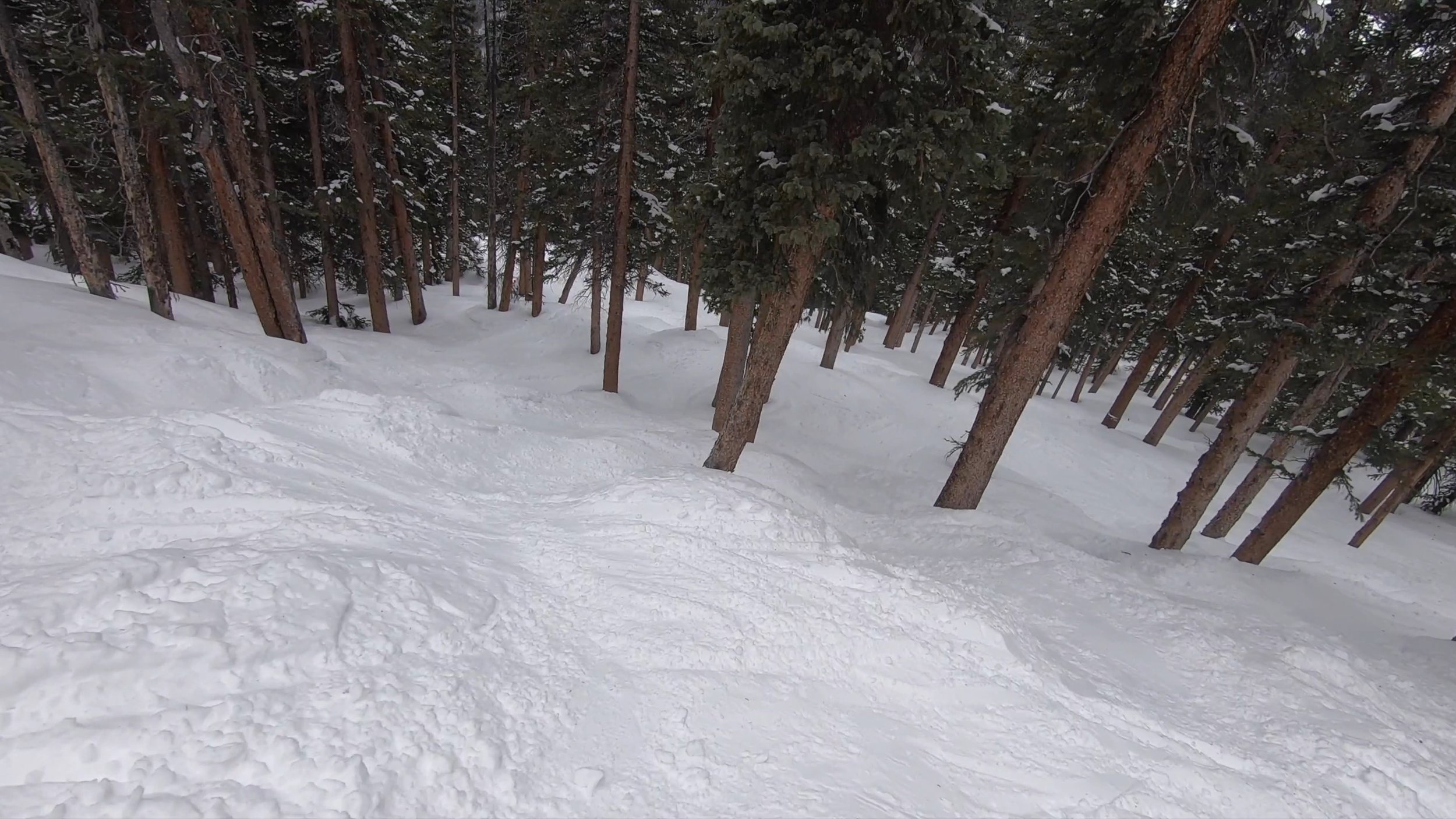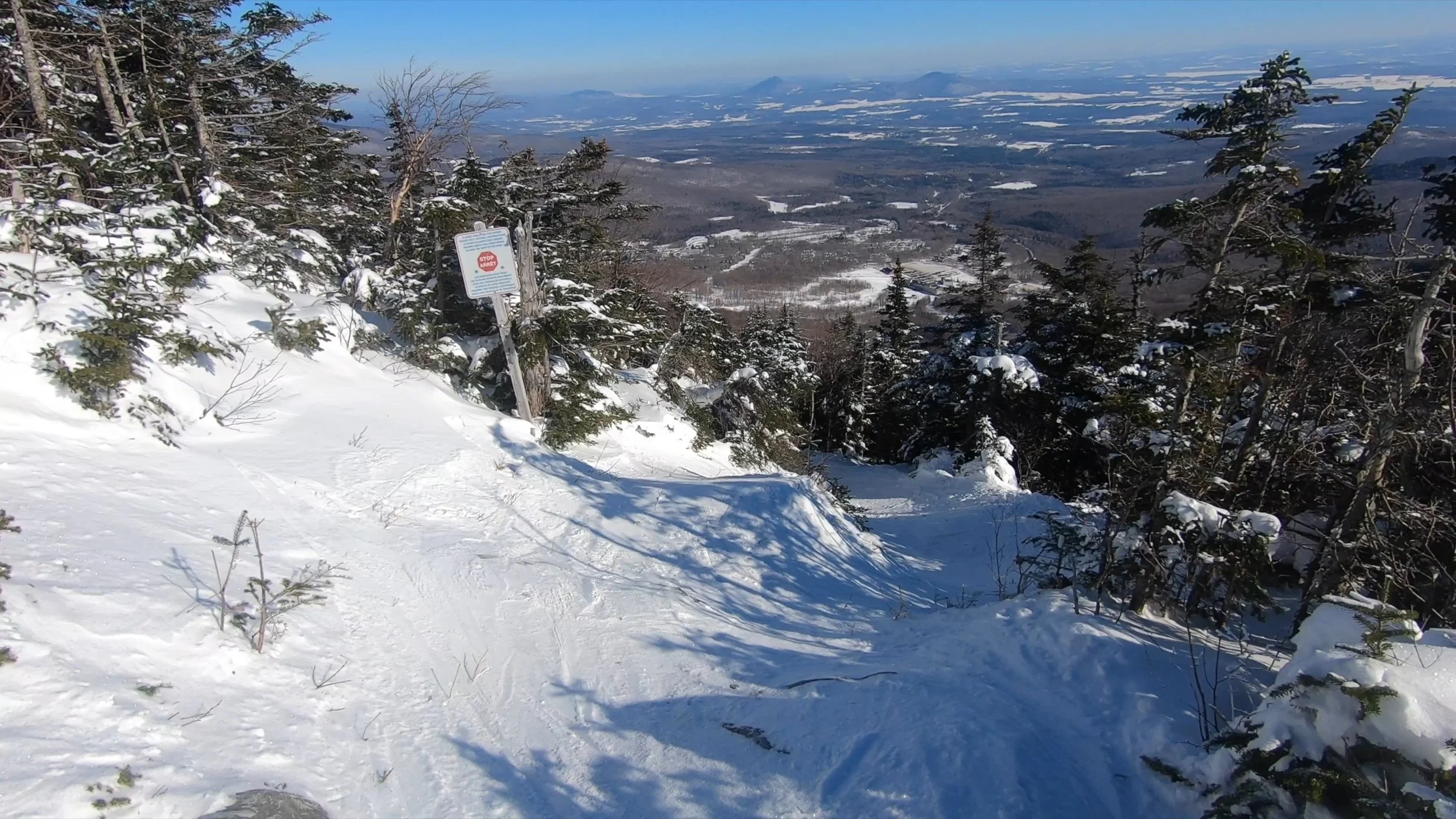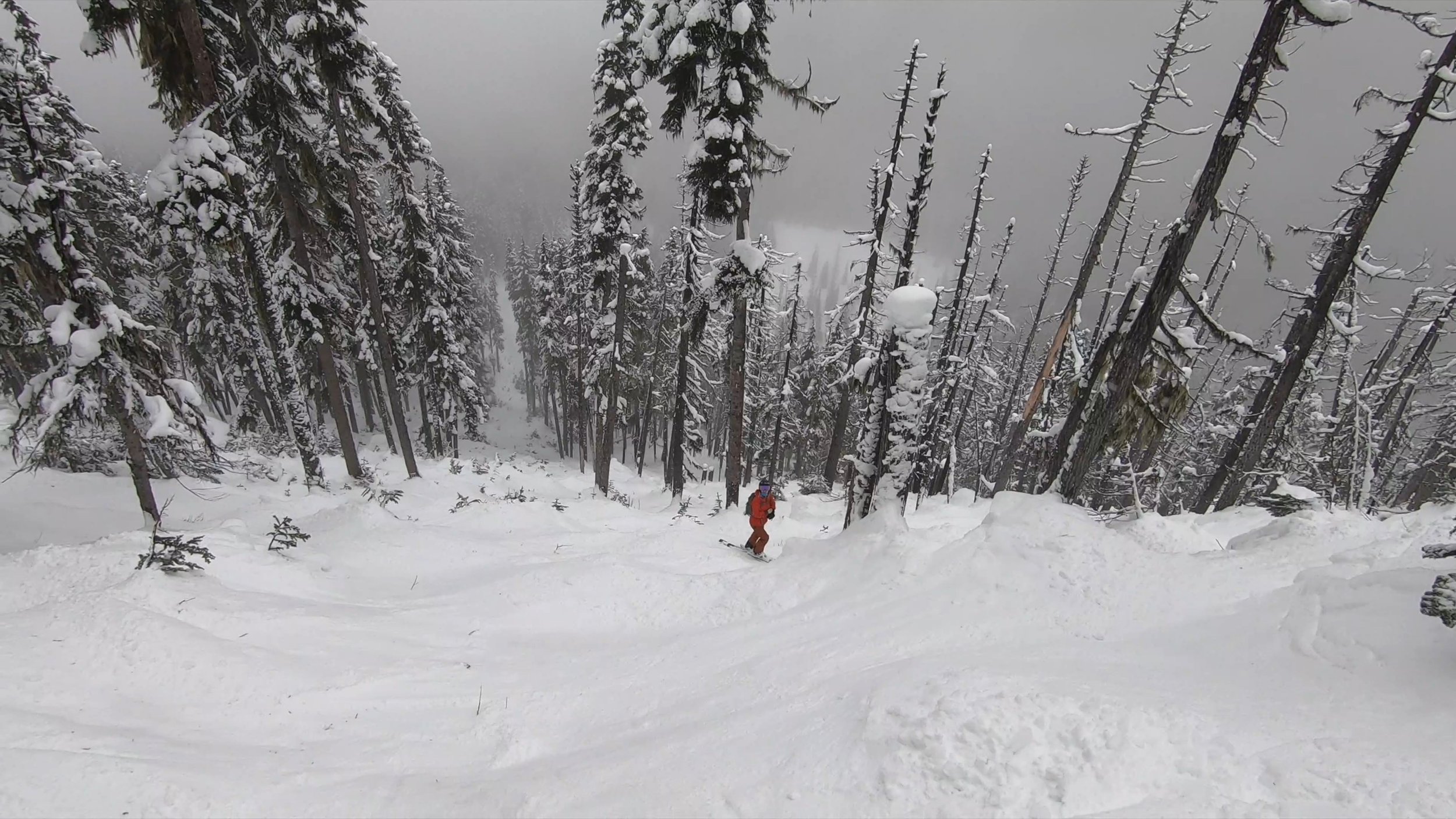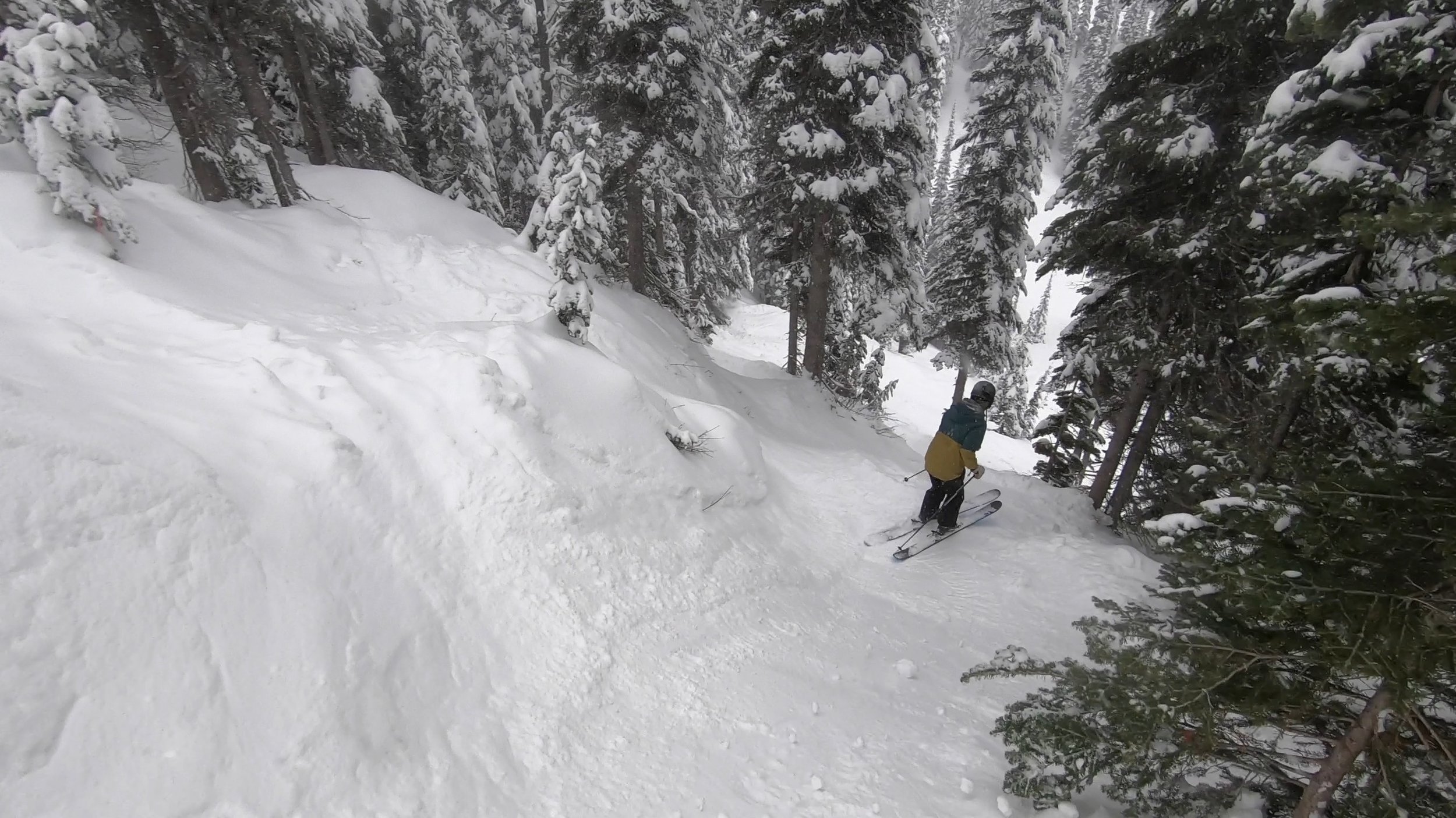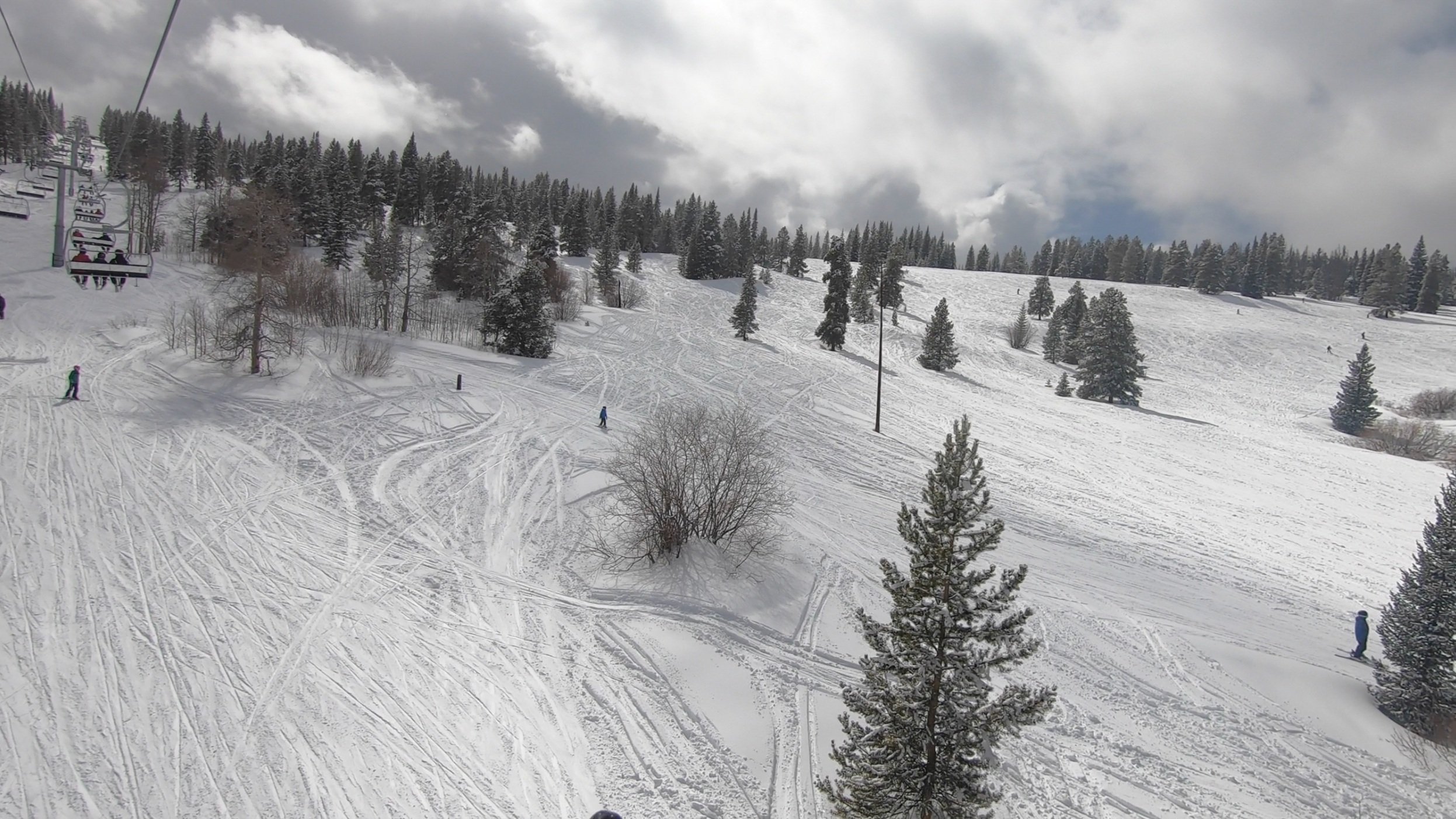Best Tree Skiing Resorts in North America
When you think of a ski resort, the terrain that typically comes to mind is that of cleared, man-made trails. But unless you’re in a tundra environment, chances are you’ll be skiing next to extensive tree forests—some of which will undoubtedly be wide enough for skiing or riding.
Tree terrain comes with more hazards than normal trails, but these wooded slopes come with a ton of unique features and characteristics that normal slopes just can’t offer. The best tree skiing mountains make for some truly unforgettable experiences, and in this piece, we’ll go through our picks for the must-hit ones, and what makes each of them especially stand out.
#12: Arapahoe Basin
First up on this list we have Arapahoe Basin, which is probably better known for its bowls and chutes than anything else. But when it comes to demanding glade terrain, there are few better choices.
Experienced tree enthusiasts will have to check out the resort’s Beavers area, which is home to a wide range of advanced and expert trees with seemingly limitless lines to choose from. But if you really want to take it to the next level, what truly sets A-Basin apart from the pack are the trees off the Pallavicini chair; not only are these woods extraordinarily steep with absolutely no room for error, but they also include some of the most insane obstacles in Colorado, with cliffs, chutes, and rocks riddled within depending on where you end up.
Arapahoe Basin is definitely not the place to learn trees—there really aren’t any beginner glade areas, and intermediate woods are somewhat limited compared to other mountains—but if you’re looking for a serious challenge, you won’t be disappointed.
#11: Jay Peak
Standout glade terrain isn’t exclusive to west of the Mississippi, and it’s hard to find a better example of this than Jay Peak.
Vermont’s northernmost ski resort already lands in the upper echelon of the state thanks to its well-designed intermediate-to-advanced glade areas, which provide dedicated tree terrain with wide enough spacing for skiability but tight enough features to make them interesting. But two qualities especially put Jay Peak over the top versus its in-state rivals: the resort’s abnormally high snowfall totals, which allow the glades to fill in much more reliably than most other East Coast mountains, and the insane, tram-serviced Jay Peak Face Chutes, which are home to what’s easily the most favorable wind-blown glades you’ll find anywhere—assuming you can handle them.
Jay Peak isn’t immune to all the variable weather patterns that East Coast mountains face, but if you get there on a typical core-season day, the trees will not let you down.
#10: Whistler Blackcomb
North America’s largest and most diverse ski resort has just about everything, and that includes standout glade terrain. Options span both Whistler and Blackcomb mountains, and the best runs can be found at mid-upper elevations just below the treeline, ranging from relatively tame, widely-spaced blue runs to insane tree-riddled chutes involving unmarked cliffs and almost no room for error. If trees are your thing, be sure to check out the Harmony chair on the Whistler side and the Crystal chair on the Blackcomb side. And for some really standout views of the trails on neighboring Whistler even from the trees, Blackcomb’s 7th Heaven area is a must hit.
Whistler does offer skiable tree terrain in certain lower-mountain areas, but the conditions can be dicey so it’s not usually worth the effort.
#9: Mount Bachelor
The first thing you’ll notice about Mount Bachelor isn’t its trees—it’s the fact that it’s an absolutely insane skiable volcano. The resort spans the entire 360 degree footprint of its namesake, and at a first glance, it especially stands out for its conspicuous high alpine.
However, first impressions are a really bad way to judge Mount Bachelor. Guests will quickly find out that the above-treeline is capriciously open, but that the resort’s near-treeline slopes host some of the most incredible glade terrain on the continent.
Bachelor’s Northwest glade runs are among the most varied one can find anywhere, with trees starting out uniquely short and small—allowing for incredible views of the surroundings—and gradually increasing to the tall, thick evergreens more typical to a ski resort—all in a single run. In fact, every below-treeline area at Mount Bachelor is home to skiable woods terrain, making for an absolutely massive glade footprint—and while the iconic Northwest trees are best suited for advanced and expert visitors, the Cloudchaser zone hosts plenty of intermediate glades as well.
So while you shouldn’t head to Mount Bachelor expecting to ski or ride the whole mountain, you can rest assured knowing you’ll be able to hit some of the best trees in the country.
#8: Whitefish
Montana’s Whitefish may not be the largest or most diverse mountain out there, but it does one thing really well—and that’s snow ghost tree skiing.
The resort’s white-crusted pines are its marquee characteristic, providing a stunning backdrop to what’s otherwise a solid but not overly distinctive footprint. Every part of the mountain is home to skiable trees, and thanks to modest visitation, the glades can hold undisturbed powder stashes for days. While there are a couple of intermediate offerings, Whitefish’s trees work really well for advanced and expert-level guests, with some seriously extreme cliffs thrown in as well depending on where you are.
Whitefish routinely sees heavy fog—and this can even seep into the more widely-spaced glades—but for lap after lap of ice-coated, steep but well-preserved tree terrain, this Northern Montana resort makes for a killer proposition.
#7: Heavenly
Next up, we have Heavenly, a sizable Tahoe ski resort that sits right on the edge of this massive lake. Now don’t get us wrong, Heavenly isn’t the only resort in the region with solid glades, and some might argue that Palisades Tahoe has better trees, especially for experts. But where Heavenly really stands out is in the facade of its tree terrain—while it’s hard to see much in the way of views in most ski resort glade trails, Heavenly’s upper-mountain glades are not only wide and short enough to offer visibility out of the trees, but also home to an absolutely astounding view of Lake Tahoe below. This vista is perhaps the most one-of-a-kind we’ve ever seen from a ski resort glade area, and when the trees have a fresh layer of snow in them, it makes for a simply magical effect.
If you’re willing to venture into the backcountry and it’s been a good snow year, the fun doesn’t stop at the resort boundary. Heavenly’s out-of-bounds gondola lift line is home to steep, expert-level glades that ski or ride right into town—with the lake front and center the whole time, and perhaps even more incredible views than one would get within the technical resort. That said, we must caveat that this area is unmarked and unpatrolled, and it should not be entered without proper avalanche training and gear.
#6: Revelstoke
If you told us 20 years ago that a ski resort as insane and remote as Revelstoke were a thing, we would have looked at you with at least mild skepticism. And we would have been right, since Revelstoke didn’t actually open in its current form until 2007, bringing with it an absolutely mind-blowing 5,600-foot lift-served vertical drop and some of the most intense terrain on the continent.
But unlike every other ski resort that even has a remotely comparable vert number, the vast majority of Revelstoke’s top-to-bottom descent can be done through tree terrain. Revelstoke’s massive pines span essentially every part of the resort, and despite their towering stature, they’re widely spaced enough to allow for comfortable glade skiing essentially everywhere. Revelstoke is an incredibly low-capacity resort, and even after the trails get tracked out—which, admittedly, can take awhile—Revy’s trees can hold powder for days, with this being the case pretty much everywhere except the perennially variable bottom thousand feet of the mountain.
Revelstoke’s glades are also home to some of the craziest challenges one can find, and the mid-mountain double-black tree runs are riddled with cliffs, rocks, and other hazards that can require mandatory air or straightlining with little to no notice—and once you’re in these expert trees, there’s basically no way to bail for several *thousand* feet. Revelstoke’s remoteness and expert-oriented runs mean it won’t be for everyone, but if you’re looking for trees that offer the ultimate combination of snow retention and endurance, there’s no better place.
#5: Brighton
Next up on this list we have Brighton, which is known for being in Utah’s Big Cottonwood Canyon, a distinctive microclimate with exceptional accumulation. Brighton’s exceptional snowfall totals allow its glades to accumulate a base quickly and hide powder stashes for days after storms.
But even compared to its Cottonwoods neighbors, which also stand out in those regards, Brighton’s tree terrain stands out for its accessibility. Brighton hosts skiable glades across its entire mountain, with options ranging from beginner to expert and including a wide variety of tree species ranging from aspens to pines. The resort’s lower-level glade terrain especially stands out, and it’s easy to dip into the trees and back out to regular trails, making these areas great for practicing. Ultimately, if you want the most hassle-free introduction to trees, Brighton is hard to beat.
#4: Powder Mountain
Powder Mountain is not as well-known than the other resorts on this list, but the mountain has an almost perfect storm of qualities to make not just for high-quality glade terrain, but the best in all of Utah. First off, all of Powder Mountain’s 2,900 lift-served skiable acres include easily accessible glade terrain—and since the resort substantially limits ticket sales, these trees tend to stay untracked for days or even weeks, resulting in some of the most consistently fresh in-bounds woods one can find anywhere.
Powder Mountain is home to a wide variety of trees, but it especially stands out for the open, widely-spaced aspens that envelop most of the resort. And unlike many competitors, Powder Mountain boasts trees that are accessible for all ability levels—with even beginners able to readily access many glade zones across the massive footprint. Sure, you might find other Utah resorts that offer some aspects of Powder Mountain’s glade experience, but none of them do it quite as well.
#3: Big White
While not as well known as some of Western Canada’s other destination ski resorts, Big White is home to some of the most otherworldly tree terrain out there. The mountain’s unique weather conditions turn Big White’s trees into snow ghosts, meaning that a thick layer of white rime builds up on top of them, making the mountain stand out substantially from your typical below-treeline slopes.
Even better, pretty much the entire terrain footprint includes skiable trees, resulting in almost unparalleled options for all abilities. This includes some especially standout widely-spaced beginner options, making the mountain top notch for those who want to experience glades but aren’t too comfortable with them yet. Big White’s upper-mountain trees are short enough to offer panoramic views of the surrounding environment and valley below, and combined with the snow ghost crystallization, this makes for a vibe that’s hard to replicate anywhere else.
#2: Beaver Creek
Colorado’s Beaver Creek is known more for its luxury ambience than anything else, but when it comes to overall glade terrain, there are few competitors that can match.
Beaver Creek seems to offer top-notch trees for just about every ability level, ranging from the outstanding, uniquely varied meadows of McCoy Park, to the tighter but still modestly pitched aspens in lower elevations, to the taxingly steep expert glades in upper-mountain areas. Speaking of these expert glades, some of Beaver Creek’s double-black tree areas are so long they’re seemingly unending, and while not quite as long as the craziest tree resorts in North America, they make for some serious endurance terrain. These areas are easy to lap too, meaning you can hit these longer tree runs over and over again. And while Beaver Creek’s longest tree runs don’t generally have extreme features in them, the resort’s shorter, aspen-lined Lower Stone Creek Chutes do include some treacherous mandatory cliffs.
So Beaver Creek has the chops to offer a world-class glade experience, with standout terrain in some respect not just for tenured experts, but for every ability level. In fact, we’d put its glades above every other mountain on this list—except one.
#1: Steamboat
Yes, that’s right—Steamboat is our pick for the most well-rounded glade terrain of any ski resort on the continent.
This northern Colorado resort has developed a storied reputation for its glades over the years, and there’s good reason for it, with the resort featuring supremely-spaced trees, diverse species ranging from pine to aspen, and distinguished slope experiences that—critically—make each glade run feel different from the last. And these characteristics aren’t restrained to any one mountain area, with these top-notch trees carrying through to every single part of the resort. This means that if you’re on any regular trail, you can reliably dip into high-quality trees of similar difficulty. In fact, we’d argue Steamboat’s trees are better than its regular trails—by a considerable margin—and most in-the-know guests will be spending the vast majority of their day in them.
Steamboat is by no means a perfect mountain, and if trees aren’t your thing, there are a lot better options. But when it comes to glade terrain alone, there’s basically no target missed.
Final Breakdown
So that’s our breakdown of the best tree skiing resorts in North America. Good glade terrain might seem hard to come by depending on what resorts you’ve hit in the past, but the best tree mountains stand out with extensive glade availability, iconic in-woods vistas, and options for a wide range of ability levels.
PeakRankings Tree Score
And what would be a ranking video without some criteria, so here’s your first look at the PeakRankings Tree Score—a new methodology we used to rank-order the mountains on this list.
We’ll caveat that there’s certainly some element of subjectivity here, but we came up with five criteria to rank the resorts. The scores of each of these categories were weighted for a final overall score out of 100:
Woods Skiability: the share of the resort’s footprint that offers accessible glade skiing
Beginner/Intermediate-Friendliness: quality of glades available for lower ability levels
Advanced/Expert-Friendliness: quality of glades available for experienced guests
Glade Uniqueness: one-of-a-kind feeling versus trees at other resorts
Tree Type Diversity: the variation in tree size, spacing, and species around the resort.
As you can see, the mountains that made this list not only had to stand out with unparalleled woods experiences and widespread on-mountain glade availability, but also needed to offer a comprehensive range of tree species for a range of abilities. We broke ties based on Woods Skiability, and then Tree Type Diversity.
And we also need to note that while these top 12 mountains really stand out, they’re not the only ski resorts with very impressive glade terrain. In fact, based on our criteria assuming we don’t break any ties, we have a ten-way tie for 13th, and if you were thinking of a mountain that didn’t show up in this article, it’s probably one of the ones listed below.
Better yet, we’ve included a link in the description to the PeakRankings Tree Score for every resort we’ve reviewed so far. Check it out below!
How’d we do? Would you change the order? We’d love to hear from you, so if you have any thoughts, hit us with a comment below!
For more information on tree skiing and over 90 North American ski resort destinations, check out our overall 2023-24 North American ski resort rankings.

